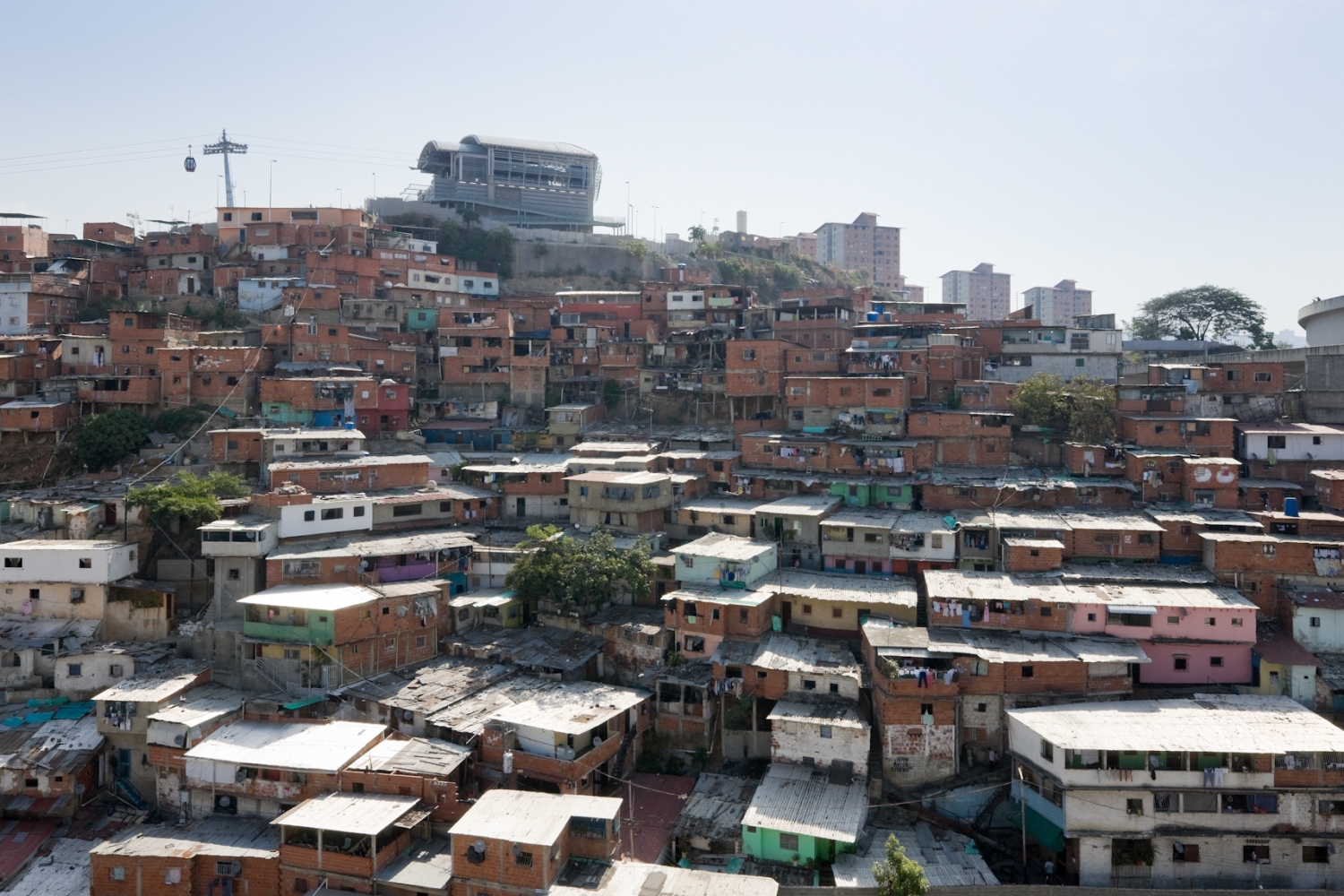
Metro Cable
The social divide afflicting informal settlements is often exacerbated by physical disconnections. In Caracas, inhabitants of the hilltop barrios have been traditionally denied many of the essential services enjoyed by their fellow citizens. In this context, architects must sometimes function as activists and mediators, bridging the gap between top-down planning and community organizing. The Metro Cable project originated as an accupunctural alternative to unnecessary and destructive urban development. In 2003, U-TT began researching the mobility crisis within San Agustin, an informal settlement with approximately 40,000 residents. Situated on a ridge adjacent to Avenida Lecuna, San Agustín was separated from the city by a major highway and canal. Residents spent hours climbing up and down steep stairs everyday to access jobs and schooling. During the rainy season, many of these paths were dangerous or impossible to use due to flooding.
To address San Agustín’s isolation, the government had announced a plan to construct a new road system and bus lines. Using mapping and modelling tools to analyze the impact of the proposal, U-TT identified that the plan would require the removal of up to one-third of San Agustín’s homes. This would have uprooted thousands of families and splintered social and livelihoods networks.
U-TT proposed instead to introduce a minimally invasive cable car system linking the barrio to the city below through a series of stations. Developed after numerous site surveys, community workshops, and consultations with international experts, the plan also called for “plug-in” buildings – flexible structures attached to each station that would provide housing, as well as cultural, community, and recreational programs. When the government initially rejected the proposal, U-TT organized a public symposium at Caracas Central University, where architects, planners, university activists, and San Agustín’s community leaders joined forces to protest the official road plan.
Eventually, the authorities embraced the cable car proposal, and set up a joint venture in 2006 between the state-owned Metro Company of Caracas and an Austrian gondola engineering firm, Doppelmayr. The completed cable car line, with five stations, opened in 2010. The system has proven to be extremely popular and affordable, moving up to 1,200 people per hour. While some of the plug-in elements of the highly politicized design proposal were altered or ignored, the project has had a clear catalytic impact in local communities, and continues to run smoothly, serving as a model for future upgrading projects around the region.